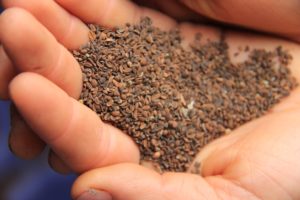
Last year, the USDA opened an inquiry into competition concerns in the seed industry, and in particular, the department looked at how intellectual property (IP) rights foster unfair competition and access to seed by farmers, plant breeders, tribal seed stewards, and other growers. This inquiry stemmed from a July 9, 2021, Executive Order on Promoting Competition in the American Economy. Per the Biden Administration’s request, the USDA opened a public comment period and hosted a listening forum to inform a report with their findings and recommendations on these topics.
This week, the USDA delivered on its promise to release a report, titled: More and Better Choices for Farmers: Promoting Fair Competition and Innovation in Seeds and Other Agricultural Inputs.
It’s no secret that the seed industry is one of the most consolidated sectors in agriculture, with just four companies controlling more than 60% of the commercial seed marketplace. As U.S. infrastructure for public plant breeding decreases, and more independent seed companies vanish, seed is increasingly concentrated in the hands of multinational firms to the detriment of growers and the communities they feed. There is an urgent need to rebalance the playing field between corporate players and independent growers, plant breeders, and seed companies. Thankfully, the report released this week outlines critical strategies for injecting fairness back into our food and agriculture supply chain.
Some highlights from the USDA report:
- Given the complexity of seed industry consolidation and IP issues, which span both IP law and antitrust law, the USDA has identified opportunities for interagency coordination with the U.S. Patent and Trademark Office (USPTO), Department of Justice, and Federal Trade Commission to promote fair competition. Through coordination, these agencies will assess the impact of seed industry consolidation and IP rights on pricing, choice, and availability of plant varieties and the impact of reduced competition on food security, genetic diversity, and regional food systems.
- USDA is also establishing a Farmer Seed Liaison to ensure “a voice for farmers and plant breeders.” This position will facilitate communications between farmers, plant breeders, and relevant agencies that touch on the IP system to enhance the quality of the patent examination process and reduce confusion around seed IP rights. USDA is also expanding its FarmerFairness.gov portal to enable farmers and businesses to report tips and complaints related to competition and consumer protection in the seed marketplace.
- USDA is also partnering with USPTO on a new Working Group on Competition and Intellectual Property to collaborate on initiatives that enhance the transparency of IP information, including exploring potential research and plant breeder exemptions for U.S. utility patents.
- USDA is using its authority under the Federal Seed Act to ensure that farmers have access to the information they need through labeling requirements to make the best choices in the seed marketplace.
- USDA is identifying priorities for additional public plant breeding and seed system investments, including in crops and regions currently underserved by the private sector and through partnerships between public entities, non-profit organizations, and historically marginalized communities who are original stewards of many varieties.
In addition to the recommendations outlined in the report, OSA hopes to see a moratorium on new seed industry mergers and acquisitions, especially those attempted by the “Big Three” in the trade. We would also like to see the agency’s coordinated initiatives to include retrospective reviews of the most recent and largest seed mergers and any impacts to farmers, competing firms, and other stakeholders. Finally, we would like to see commercial cultivars developed with public dollars to remain in the public domain free of restrictions on seed-saving, research, and breeding.
